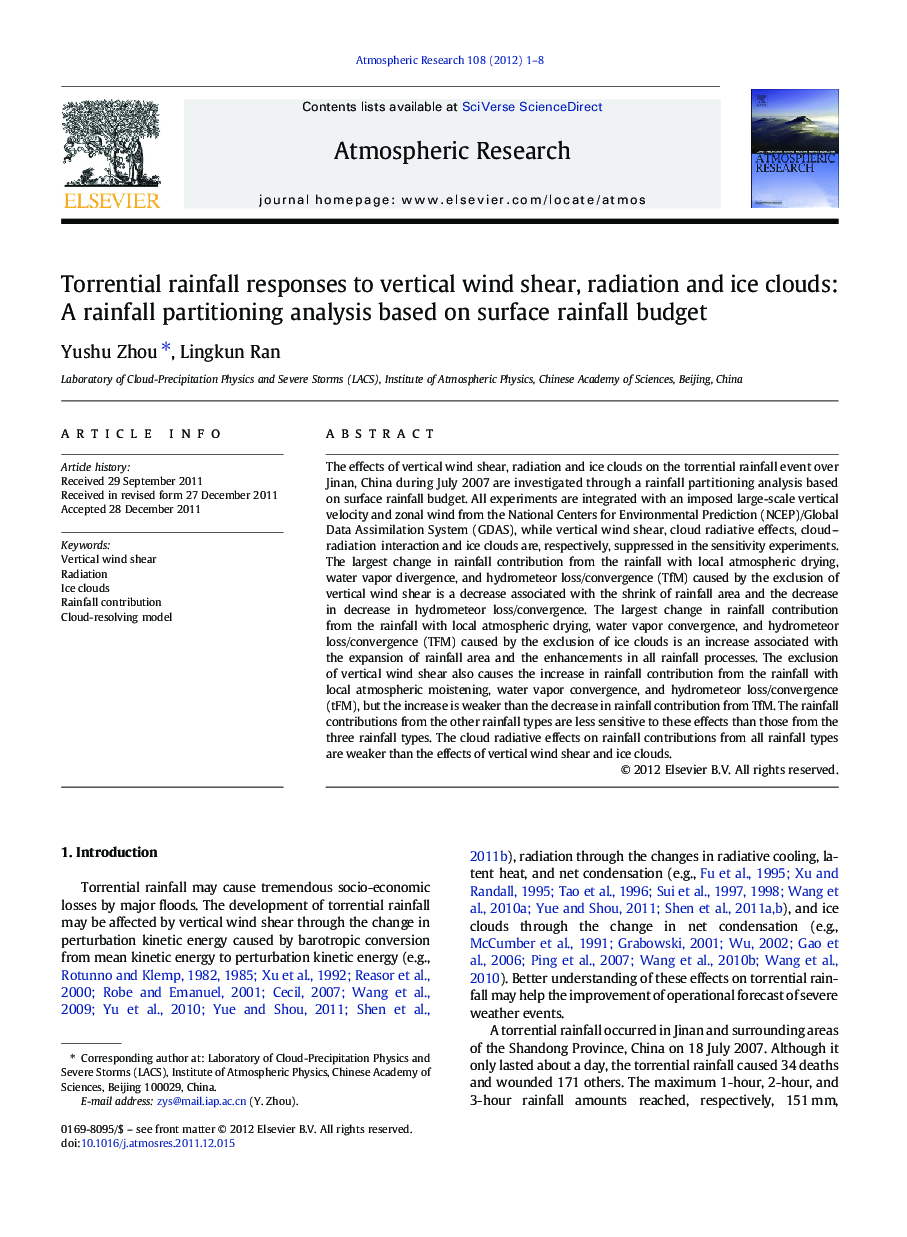| Article ID | Journal | Published Year | Pages | File Type |
|---|---|---|---|---|
| 4450262 | Atmospheric Research | 2012 | 8 Pages |
The effects of vertical wind shear, radiation and ice clouds on the torrential rainfall event over Jinan, China during July 2007 are investigated through a rainfall partitioning analysis based on surface rainfall budget. All experiments are integrated with an imposed large-scale vertical velocity and zonal wind from the National Centers for Environmental Prediction (NCEP)/Global Data Assimilation System (GDAS), while vertical wind shear, cloud radiative effects, cloud–radiation interaction and ice clouds are, respectively, suppressed in the sensitivity experiments. The largest change in rainfall contribution from the rainfall with local atmospheric drying, water vapor divergence, and hydrometeor loss/convergence (TfM) caused by the exclusion of vertical wind shear is a decrease associated with the shrink of rainfall area and the decrease in decrease in hydrometeor loss/convergence. The largest change in rainfall contribution from the rainfall with local atmospheric drying, water vapor convergence, and hydrometeor loss/convergence (TFM) caused by the exclusion of ice clouds is an increase associated with the expansion of rainfall area and the enhancements in all rainfall processes. The exclusion of vertical wind shear also causes the increase in rainfall contribution from the rainfall with local atmospheric moistening, water vapor convergence, and hydrometeor loss/convergence (tFM), but the increase is weaker than the decrease in rainfall contribution from TfM. The rainfall contributions from the other rainfall types are less sensitive to these effects than those from the three rainfall types. The cloud radiative effects on rainfall contributions from all rainfall types are weaker than the effects of vertical wind shear and ice clouds.
► Removed wind shear reduces rain with air drying and cloud convergence. ► Removal of ice clouds enhances rain with air drying and vapor/cloud convergemce. ► Cloud radiative effect on rain is weaker than effect of wind shear and ice clouds.
